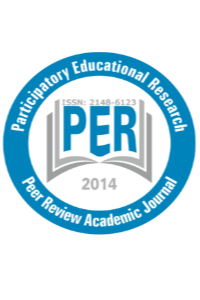
Participatory Educational Research
Yazarlar: Sri RAHAYUNİNGSİH, Sirajuddin SİRAJUDDİN, Muhammad IKRAM
Konular:Eğitim, Eğitim Araştırmaları
DOI:10.17275/per.21.66.8.3
Anahtar Kelimeler:Open-Ended Problem-Solving Tests (OEPST),Mathematical creative thinking ability,Cognitive flexibility,Cognitive fluency
Özet: This study aimed to examine an open-ended problem-solving assessment tool that can be used to measure the profile of students’ mathematical creativity based on the type of mathematical creativity. The open-ended problem-solving assessment consists of open-ended problem-solving sheets and interview guidelines to measure the profile of students' mathematical creativity. One hundred and five students were asked to solve open-ended problems. From each group, one student was selected to be interviewed with the aim of obtaining a more detailed explanation of each of these types. The two types can be explained as follows. The “very creative” students were those who could perform cognitive flexibility and cognitive fluency in solving open-ended problems. The other type of students was creative students who were able to think flexibly (cognitive flexibility) when solving open-ended problems. Cognitive flexibility includes the ability to describe various solutions and provide more than one answer to a problem. Cognitive fluency includes the ability to interpret the answer smoothly and accurately without any constraints. It may also refer to the ability to correct a wrong answer even though there was a mistake during the operating process. The analysis results showed that the open-ended problem-solving assessment was an effective tool to measure students' mathematical creativity in terms of results (products) and processes. In terms of results (products), it was able to determine the type of students’ mathematical creative ability, namely very creative and creative, while in terms of processes, it was able to describe the differences in the cognitive profile of the two types.